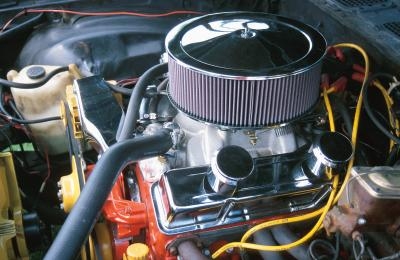
As cam bearings are made out of a very soft metal, when inserting them into an engine great care must be taken; you can't simply pound them in with a hammer, as they will bend. Furthermore, cam bearings have to be aligned perfectly straight when inserted into the bore. Expensive, specialized cam bearing tools are commercially available, but home mechanics can duplicate these tools with a little ingenuity using common materials found around the shop.
A cam bearing insertion tool is like a clamp: a long, threaded rod with two nuts on the outside edge; when you tighten the nuts, two plates are squeezed in to drive the cam bearing, on the inside of one plate, into its bore. The trick is to get the insertion plate at the right diameter. The plate has a turned-down or smaller section, just a little smaller than the bearing's inside diameter, and a lip to catch on the bearing; the lip has to be just a little smaller than the bearing's outside diameter.
The other plate helps with alignment when inserting the bearing. The plate also has a lip and a smaller section. Make the smaller section of the plate just a little smaller from the cam bearing bore on the engine block. Make the lip just a little bigger than the retaining area of the block. Drill a hole in the middle for the long threaded rod.
The plates themselves have to be about the same hardness as the cam bearing (or slightly softer). Make the insertion plates out of aluminum, hardwood or furniture-grade plywood; if you have a wood lathe, these can be lathe turned. If you do not, the plates can be made at any local machine shop; take the cam bearing with you and the shop will measure the diameters and size up the insertion plates accordingly. (A home mechanic living in Italy who presented his insertion tool to the public used aluminum for the plates that he had made by a machine shop.)
Assemble the tool in the engine block, with the bearing just outside the block. Tighten down the nuts on the threaded rod, and the plates will be squeezed in. By its action, the tool squeezes the bearing into its bore. Since the bearing is very soft, you can take a safety precaution: slip a piece of bicycle inner tube about 6 inches long over the threaded rod near the bearing; the inner tube covers the threads so you don't accidentally nick the bearing surface.